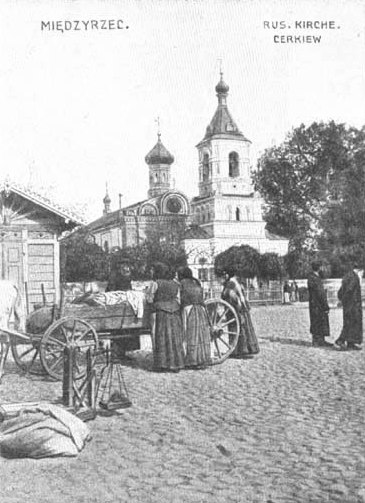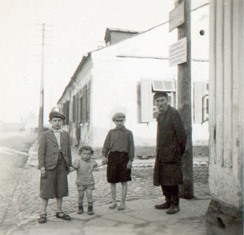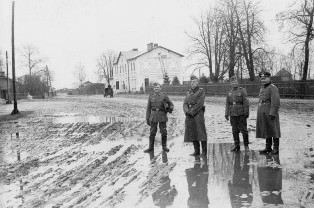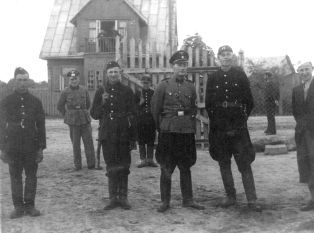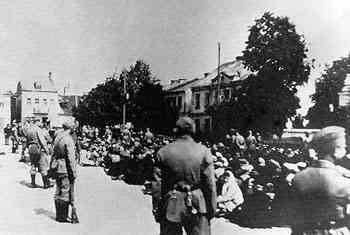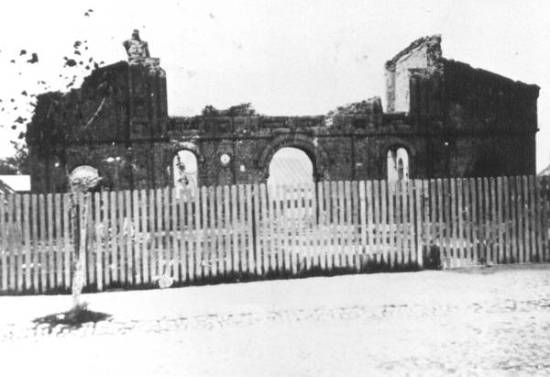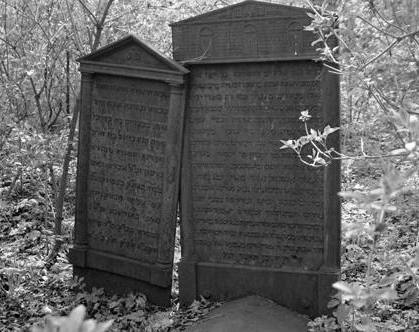Holocaust Education & Archive Research Team |
Ghettos
Introduction to the Ghettos of the Holocaust
Jewish Ghettos The Judenrat Judenrat Leaders Prominent Jews
| ||||
Miedzyrzec
Miedzyrzec Podlaski was a well known Jewish community in central Poland, where Jews had lived since the 16th century. In the 19th and at the beginning of the 20th century, the town was a famous Jewish centre for the production of brushes and furs. Before WW2 the Jewish population of Miedzyrzec numbered about 12,000 people, around 75% of the total population in town.
In the same manner as in other ghettos, a Judenrat and a Jewish police force were established in the town. Klarberg became president of Miedzyrzec's Judenrat. The awful situation in the Jewish district became even worse when from early 1940, large transports, each with around 1,500 resettled Jews from Nasielsk, Pultusk, Serock, Lodz and Gdynia arrived. Until early 1941 other transports also arrived from Krakow (740 people) and Mlawa (1,400 people). In addition, a group of Jewish POWs from the former Polish army was sent to the town. Most of the deportees possessed nothing except their own clothes. Hunger and lack of space became the biggest problems. Around 650 Jews were housed in the unheated synagogue. According to the JSS report from early 1941, 6 - 8 people died from starvation every day. The daily bread ration was 100 grams (working Poles received 260 grams). In 1940, around 2,400 Jews from Miedzyrzec were sent to small labour camps in Biala Podlaska, Klody, Rogoznica, Rossosz and Lesna Podlaska. They were forced to work for the Wasserwirtschaftsinspektion (Water Supplies Inspection (WWI), installed by the Germans). They received neither salary nor sufficient food.
Before the deportations to Treblinka began, more Jews were resettled in Miedzyrzec: around 500 from Mielec in March 1942 and 1,001 Slovakian Jews on 8 May 1942. On 2 August 1942, 17,546 Jews were concentrated in Miedzyrzec.
During these two days around 10,000 Miedzyrzec Jews were deported to Treblinka. 960 were shot in the town. The deportees were crammed into overcrowded cattle cars (120 - 140 per wagon). Most of them died before they arrived in Treblinka. The first transport from Miedzyrzec was described very well by one of the survivors from Treblinka, Abraham Krzepicki. When the prisoners (Treblinka special command) opened the cattle cars, they discovered only dead people.
Around 150 women and children were executed at the Jewish cemetery in course of this Aktion, since there was insufficient space in the cattle cars... Two members of this deportation escaped from Treblinka and returned to Miedzyrzec. They informed others about the fate of the Miedzyrzec Jews. From that time the ghetto people started building "bunkers" and tried to escape to the surrounding forests. The Treblinka fugitives were finally denounced by Judenrat members and shot by the Gestapo.
These people were deported to Treblinka during the third Aktion between 27 and 29 October 1942. A short time later a fourth Aktion took place: Between 7 and 8 November, about 2,000 - 3,000 Jews were deported to Treblinka (Jews from Miedzyrzec were deported together with Jews from Lukow).
After this deportation only 1,000 Jews remained in Miedzyrzec. At this time Jews from the surrounding villages and those who hid in the forests decided to return to the ghetto because they thought that no more "actions" would be carried out. According to an order of the "SS and Police Commander in the Generalgouvernement, Krüger, Miedzyrzec was to be one of the Rest Ghettos in the Lublin district. Joel Schupack, who survived the Radzyn and Miedzyrzec ghetto selections, gave a good description of the ghetto situation between the end of 1942 and early 1943:
"At this time there was no Judenrat, no administration. Only the brutal Jewish police force, known as Gestapo helpers. There was no registration, no hygienic facilities, no fuel or heat and no food. People lived on the reserves of their predecessors, if they found any or they would smuggle which usually entailed the involvement of the Jewish police. It was said that they would drink with the Polish police."
Many Jews were still building "bunkers" in the ghetto, knowing that it could be only a temporary hiding place before the next deportation. On 30 December 1942 the workshops were liquidated. The Jewish brush makers were transferred to the Trawniki work camp. In the summer of 1943 this group was transferred again to the Majdanek concentration camp where they had to work for the Osti company- controlled by Odilo Globocnik and the SS in Lublin.
Complete Jewish families from Miedzyrzec found themselves at Majdanek where they were located at Field IV, in a separated area. All of them were finally executed at Majdanek, during the Aktion Erntefest executions on 3 November 1943. Relative quiet then prevailed in the ghetto for the next months. But a fifth Aktion took place on 30 April 1943. The Jews were gathered on the market square and around 1,000 people were deported to Majdanek. During this Aktion the last members of the Judenrat and the Jewish police were executed.
YIVO Private Collections L.B
Copyright CW, CK, RK, TT & LB H.E.A.R.T 2007
|
